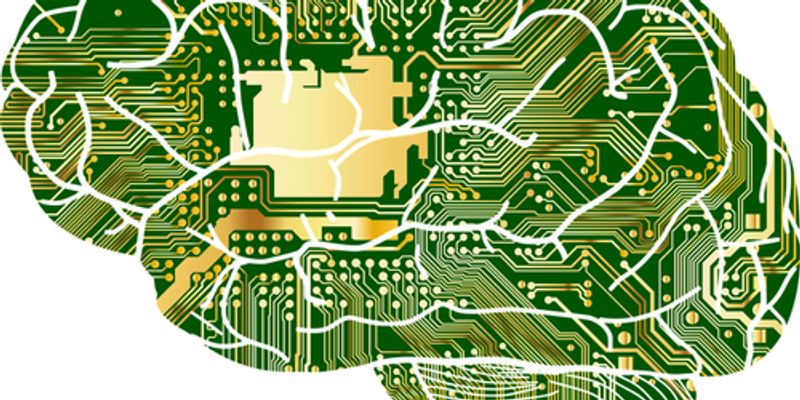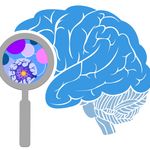Neural Recording
Neural Recording, such as that done by electroencephalogram (EEG), is performed to measure activity in the brain by monitoring neurons. To perform neural recording, sensors are attached to the scalp where they monitor electrical signals produced by the brain. A machine records the electrical signals which can be reviewed by a healthcare professional to diagnosis injury, illness, and disease.
-
On DemandC.E. CREDITSSpeech neuroprostheses have the potential to restore communication to people living with paralysis, but naturalistic speed and expressivity are elusive. Here we use high-density surface reco...MAR 08, 2023 | 10:30 AMDeep–Brain Stimulation (DBS) has become an effective means of treating a variety of neurological conditions. Most DBS systems work are "open-loop," and apply constant stimula...MAR 08, 2023 | 6:00 AMIn this talk, I will discuss the development of interpretable machine learning models to test scientific hypotheses, with a specific focus on spinal motor control. Voluntary movement require...MAR 10, 2022 | 11:55 PMBehavior in complex environments requires decisions that flexibly combine stimulus representations with context, goals, and memory. Two key aspects of such cognitive flexibility are the retr...MAR 10, 2022 | 11:55 PMTreatment-resistant depression is an immense source of disability and suffering, and represents a major unmet clinical need for innovative and effective therapies. Deep brain stimulation tri...MAR 10, 2022 | 11:55 PMNeuroscience is experiencing an exciting era of integrating novel materials and tools to record neural activity made possible through significant advances in materials science, electrical en...MAR 10, 2022 | 11:55 PMBrain wave synchronization, also called neuronal coherence, is a fundamental mechanism of communication in the brain, where synchronized field potentials coordinate synaptic and spiking even...MAR 10, 2022 | 11:55 PMWe are in critical need of targeted and individualized treatments for mental health disorders, which affect nearly 50% of Americans during our lifetimes. Brain stimulation treatments, includ...MAR 10, 2022 | 11:55 PMDetection of neural signatures related to pathological behavioral states could enable adaptive deep brain stimulation (DBS), a potential strategy for improving efficacy of DBS for neurologic...MAR 10, 2022 | 11:55 PMWhile our lives unfold over time, weaving dynamic information into continuous experience, our memories are organized as discrete events. Detection of cognitive boundaries is critical for seg...AUG 25, 2021 | 10:30 AMIn 1910, Harrison published the first report of frog embryonic sympathetic ganglia grown in hanging drops of lymph for a few days, where single neurons extended nerve fibers with complex gro...Speaker: Erna van Niekerk, Ph.D.AUG 25, 2021 | 12:00 AMUnderstanding how populations of neurons work together to represent stimuli, build percepts, and generate complex behaviors, is a fundamental challenge in neuroscience. To establish a link b...AUG 25, 2021 | 12:00 AMLearning Objections: 1. To learn a new approach to understanding brain function by creating networks to perform tasks using machine learning. 2. To learn how how to probe these networks to d...AUG 25, 2021 | 12:00 AMWe will show how to combine large scale neural recordings and mechanistic neural network models to advance our conceptual understanding of how neural circuits mediate cognitive functions lik...AUG 25, 2021 | 12:00 AMRecent advances in machine learning have shown that deep neural networks (DNNs) can provide powerful and flexible models of neural sensory processing. In the auditory system, standard linear...AUG 25, 2021 | 12:00 AMOne role of theory is in guiding future experiments: What should we aim to measure? Which experimental results should we be surprised about? I will argue here that simple random networks mod...AUG 06, 2020 | 12:00 AMOur work focuses on developing an optical brain-machine interface capable of interacting with neural activity in real-time. In this talk, I will describe our progress toward building the com...JUN 01, 2020 | 11:30 AMThe BRAIN Initiative has enabled the development of novel neural recording tools that can benefit many labs, but are difficult to transition to industry for a variety of reasons. Here we ass...Speaker: Organizer(s): Loren Frank, Rahul PanatMAR 24, 2020 | 11:00 AMDATE: March 24, 2020 TIME: 11:00am PT, 2:00pm ET While in vitro cell culture has long been used to study neurological diseases, researchers have come to the realization that 2-D systems do n...MAR 11, 2020 | 3:00 PMWorking memory (the ability to hold some information in mind for a few seconds, and to manipulate that information) and decision-making (committing to one out of multiple possible choices) a...Speaker: Carlos Brody, PhD , Ben Engelhard, PhD , Stephen Keeley, PhD , Marlies Oostland, PhD , Lucas Pinto, MD, PhD , Adrian Wanner, PhD , Ilana Witten, PhDPresented at: Neuroscience Virtual Event Series 2020
MAR 11, 2020 | 1:30 PMEpisodic memories are essential for human cognition, but the underlying neural mechanisms remain poorly understood. We utilize the opportunity to record in-vivo from human single neurons sim...Speaker: Adam Mamelak, MD , Ueli Rutishauser, PhD , Gabriel Kreiman, PhD , Jie Zheng, PhDPresented at: Neuroscience Virtual Event Series 2020
MAR 11, 2020 | 12:00 PMBrain machine interfaces (BMIs) aim to help patients with paralysis to use their recorded brain activity to control assistive devices. BMI research requires the collaboration of neuroscienti...Speaker: Tyson Aflalo, PhD , Richard Andersen, PhD , Spencer Kellis, PhD , Charles Liu, MD, PhDPresented at: Neuroscience Virtual Event Series 2020
MAR 11, 2020 | 12:00 PMApproximately 300,000 people in the United States have a spinal cord injury with many of these individuals experiencing permanent motor and sensory deficits. For individuals with cervical sp...Speaker: Robert Gaunt, PhD , Michael Boninger, MD , Jennifer Collinger, PhDPresented at: Neuroscience Virtual Event Series 2020
MAR 11, 2020 | 10:30 AMThe neural basis of simple rhythmic and reflexive behaviors such as swimming and gill withdrawal have been successfully studied in nudibranchs and other gastropod molluscs because the brains...Speaker: Paul Katz, PhD , Jeff Lichtman, MD, PhD , William Frost, PhD , Deidre Lyons, PhD , Vince Lyzinski, PhD, B.Sc, M.Sc, M.Sc.E.Presented at: Neuroscience Virtual Event Series 2020
On Demand
C.E. CREDITS
Speech neuroprostheses have the potential to restore communication to people living with paralysis, but naturalistic speed and expressivity are elusive. Here we use high-density surface reco...
MAR 08, 2023 | 10:30 AM
Deep–Brain Stimulation (DBS) has become an effective means of treating a variety of neurological conditions. Most DBS systems work are "open-loop," and apply constant stimula...
MAR 08, 2023 | 6:00 AM
In this talk, I will discuss the development of interpretable machine learning models to test scientific hypotheses, with a specific focus on spinal motor control. Voluntary movement require...
MAR 10, 2022 | 11:55 PM
Behavior in complex environments requires decisions that flexibly combine stimulus representations with context, goals, and memory. Two key aspects of such cognitive flexibility are the retr...
MAR 10, 2022 | 11:55 PM
Treatment-resistant depression is an immense source of disability and suffering, and represents a major unmet clinical need for innovative and effective therapies. Deep brain stimulation tri...
MAR 10, 2022 | 11:55 PM
Neuroscience is experiencing an exciting era of integrating novel materials and tools to record neural activity made possible through significant advances in materials science, electrical en...
MAR 10, 2022 | 11:55 PM
Brain wave synchronization, also called neuronal coherence, is a fundamental mechanism of communication in the brain, where synchronized field potentials coordinate synaptic and spiking even...
MAR 10, 2022 | 11:55 PM
We are in critical need of targeted and individualized treatments for mental health disorders, which affect nearly 50% of Americans during our lifetimes. Brain stimulation treatments, includ...
MAR 10, 2022 | 11:55 PM
Detection of neural signatures related to pathological behavioral states could enable adaptive deep brain stimulation (DBS), a potential strategy for improving efficacy of DBS for neurologic...
MAR 10, 2022 | 11:55 PM
While our lives unfold over time, weaving dynamic information into continuous experience, our memories are organized as discrete events. Detection of cognitive boundaries is critical for seg...
AUG 25, 2021 | 10:30 AM
In 1910, Harrison published the first report of frog embryonic sympathetic ganglia grown in hanging drops of lymph for a few days, where single neurons extended nerve fibers with complex gro...
Speaker:
Erna van Niekerk, Ph.D.
AUG 25, 2021 | 12:00 AM
Understanding how populations of neurons work together to represent stimuli, build percepts, and generate complex behaviors, is a fundamental challenge in neuroscience. To establish a link b...
AUG 25, 2021 | 12:00 AM
Learning Objections: 1. To learn a new approach to understanding brain function by creating networks to perform tasks using machine learning. 2. To learn how how to probe these networks to d...
AUG 25, 2021 | 12:00 AM
We will show how to combine large scale neural recordings and mechanistic neural network models to advance our conceptual understanding of how neural circuits mediate cognitive functions lik...
AUG 25, 2021 | 12:00 AM
Recent advances in machine learning have shown that deep neural networks (DNNs) can provide powerful and flexible models of neural sensory processing. In the auditory system, standard linear...
AUG 25, 2021 | 12:00 AM
One role of theory is in guiding future experiments: What should we aim to measure? Which experimental results should we be surprised about? I will argue here that simple random networks mod...
AUG 06, 2020 | 12:00 AM
Our work focuses on developing an optical brain-machine interface capable of interacting with neural activity in real-time. In this talk, I will describe our progress toward building the com...
JUN 01, 2020 | 11:30 AM
The BRAIN Initiative has enabled the development of novel neural recording tools that can benefit many labs, but are difficult to transition to industry for a variety of reasons. Here we ass...
Speaker:
Organizer(s): Loren Frank, Rahul Panat
MAR 24, 2020 | 11:00 AM
DATE: March 24, 2020 TIME: 11:00am PT, 2:00pm ET While in vitro cell culture has long been used to study neurological diseases, researchers have come to the realization that 2-D systems do n...
MAR 11, 2020 | 3:00 PM
Working memory (the ability to hold some information in mind for a few seconds, and to manipulate that information) and decision-making (committing to one out of multiple possible choices) a...
Speaker:
Carlos Brody, PhD
, Ben Engelhard, PhD
, Stephen Keeley, PhD
, Marlies Oostland, PhD
, Lucas Pinto, MD, PhD
, Adrian Wanner, PhD
, Ilana Witten, PhD
Presented at: Neuroscience Virtual Event Series 2020
MAR 11, 2020 | 1:30 PM
Episodic memories are essential for human cognition, but the underlying neural mechanisms remain poorly understood. We utilize the opportunity to record in-vivo from human single neurons sim...
Speaker:
Adam Mamelak, MD
, Ueli Rutishauser, PhD
, Gabriel Kreiman, PhD
, Jie Zheng, PhD
Presented at: Neuroscience Virtual Event Series 2020
MAR 11, 2020 | 12:00 PM
Brain machine interfaces (BMIs) aim to help patients with paralysis to use their recorded brain activity to control assistive devices. BMI research requires the collaboration of neuroscienti...
Speaker:
Tyson Aflalo, PhD
, Richard Andersen, PhD
, Spencer Kellis, PhD
, Charles Liu, MD, PhD
Presented at: Neuroscience Virtual Event Series 2020
MAR 11, 2020 | 12:00 PM
Approximately 300,000 people in the United States have a spinal cord injury with many of these individuals experiencing permanent motor and sensory deficits. For individuals with cervical sp...
Speaker:
Robert Gaunt, PhD
, Michael Boninger, MD
, Jennifer Collinger, PhD
Presented at: Neuroscience Virtual Event Series 2020
MAR 11, 2020 | 10:30 AM
The neural basis of simple rhythmic and reflexive behaviors such as swimming and gill withdrawal have been successfully studied in nudibranchs and other gastropod molluscs because the brains...
Speaker:
Paul Katz, PhD
, Jeff Lichtman, MD, PhD
, William Frost, PhD
, Deidre Lyons, PhD
, Vince Lyzinski, PhD, B.Sc, M.Sc, M.Sc.E.
Presented at: Neuroscience Virtual Event Series 2020
























